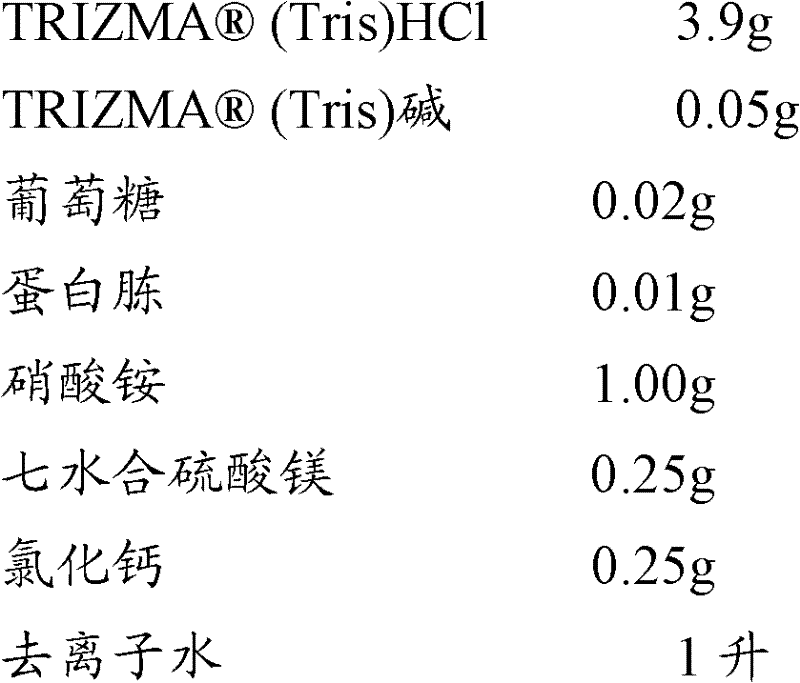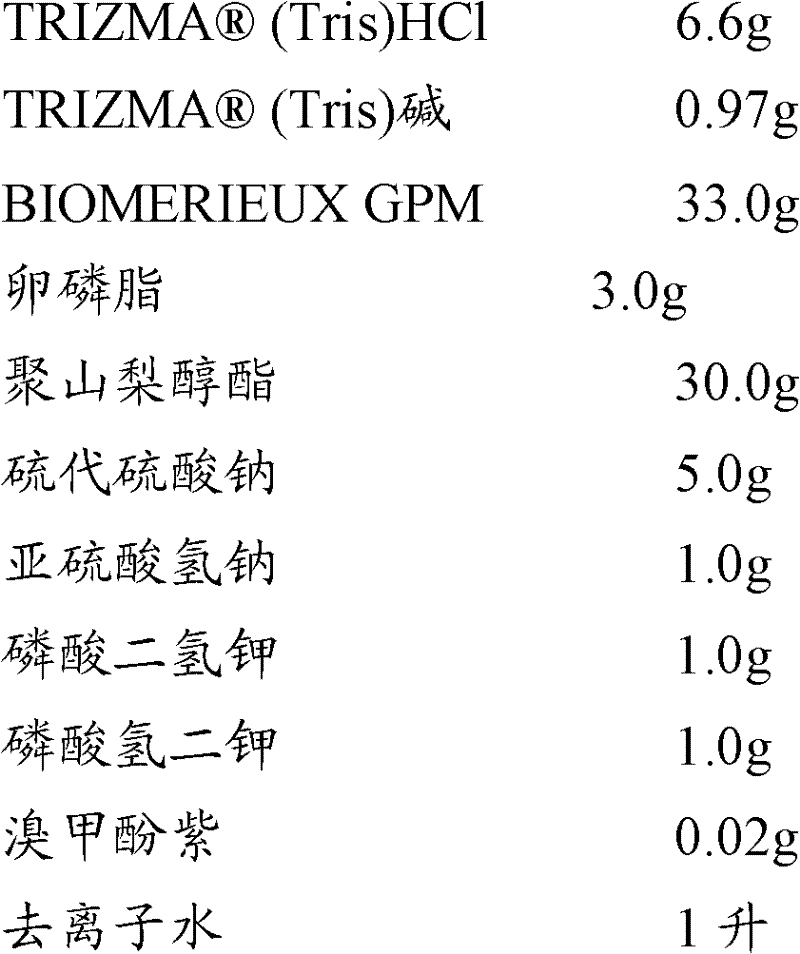Microbicidal compositions including activated nitrogenous compound and 1,4-bis (bromoacetoxy)-2-butene, and methods of using the same
A technology of bromoacetoxy and nitrogen compounds, which is applied in the field of compositions for controlling microbial growth in water systems, can solve problems such as increased processing costs, and achieve the effects of reducing adverse side effects and high antimicrobial efficacy
- Summary
- Abstract
- Description
- Claims
- Application Information
AI Technical Summary
Problems solved by technology
Method used
Image
Examples
Embodiment 1
[0126] Ammonium sulfate in the form of BUSPERSE 2454 from Buckman Laboratories (Memphis, Tenn) as a nitrogen-containing compound (activated N-compound) and 1,4-bis(bromoacetoxy)-2-butene (BBAB )Compositions. The amounts of nitrogen-containing compounds activated by oxidizing agents shown in Table 1 are based on the active ingredient alone. Introduced from Buckman Laboratories (Memphis, Tenn.) 1210's BBAB in the form of an emulsion. The amounts of BBAB shown in Table 1 are based on the active ingredient of BBAB alone, not on the total amount of the emulsion. The organism tested was Enterobacter aerogenes (ATCC 13048). The incubation period was 18 hours (37°C).
[0127] Table 1
[0128]
[0129] Mic A = alone activated N-compound MIC= 5.0 mg. / l
[0130] Mic B = MIC of BBAB alone = 40 mg. / l
[0131] [A] = Combining individual BBAB activated N-compound MIC (mg. / l)
[0132] [B] = MIC of individual BBAB combined with BBAB (mg. / l)
[0133] * = value < 1 indicates...
Embodiment 2
[0135] Synergy in the presence of sulfites . The efficacy of the actives and mixtures was evaluated in a white water (ww) sample containing 12.8 ppm of sulfite. Two ATP measurements were performed and percent inhibition was calculated as a measure of antimicrobial efficacy. Raw data were converted to percent inhibition by using the following formula:
[0136] % inhibition=[(u-t) / u]×100
[0137] in:
[0138]u = at time 10分钟 ATP value of unprocessed ww
[0139] t = at time 10分钟 The ATP value of ww after treatment
[0140] The data in Table 2 demonstrate the synergistic activity of the compounds with a 20 minute delay between additions and a 10 minute incubation before measuring ATP values.
[0141] Table 2
Embodiment 3
[0143] Evaluation of the synergistic effect against filamentous bacteria . The Fractional Inhibitory Concentration Index (FIC) was determined using the checkerboard method as an index of synergy between activated N-compounds and Busan 1210 (BBAB) against pure isolates of filamentous bacteria cultured from paper mill sludge deposits. predictor. Isolates were identified by 16S ribosomal RNA sequencing technology. MicroSeq data analysis and identification software was used for gene assembly and data analysis; isolates were identified as Flectobacillus strains.
[0144] The modified basal medium buffer was inoculated with a suspension of the bacterial isolate to obtain a final concentration of 1 × 10 5 cells. There was a delay between additions, Busan 1210 (BBAB) was added 20 minutes before monochloramine (MCA) was added. After an exposure time of 3 hours, the treatment reagents were sub-cultured on nutrient and plate count agar (PCA) and incubated at 28°C for 48 hours. Pla...
PUM
| Property | Measurement | Unit |
|---|---|---|
| boiling point | aaaaa | aaaaa |
| freezing point | aaaaa | aaaaa |
Abstract
Description
Claims
Application Information
 Login to View More
Login to View More - R&D
- Intellectual Property
- Life Sciences
- Materials
- Tech Scout
- Unparalleled Data Quality
- Higher Quality Content
- 60% Fewer Hallucinations
Browse by: Latest US Patents, China's latest patents, Technical Efficacy Thesaurus, Application Domain, Technology Topic, Popular Technical Reports.
© 2025 PatSnap. All rights reserved.Legal|Privacy policy|Modern Slavery Act Transparency Statement|Sitemap|About US| Contact US: help@patsnap.com



